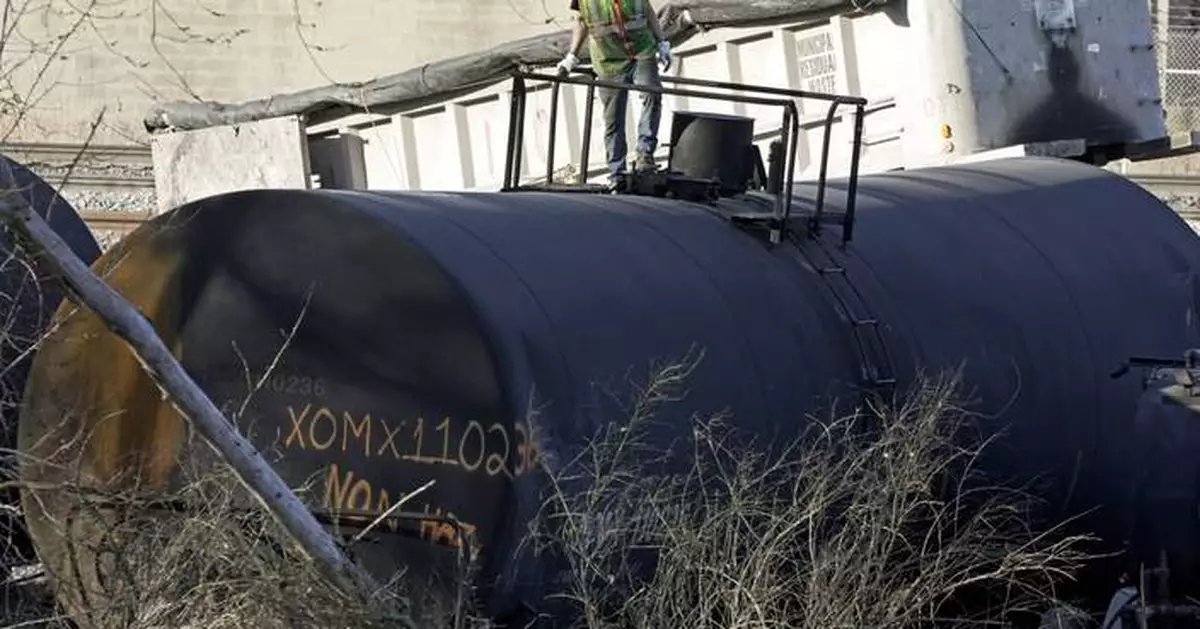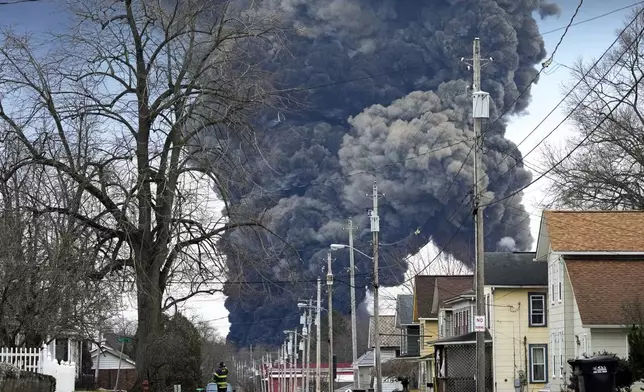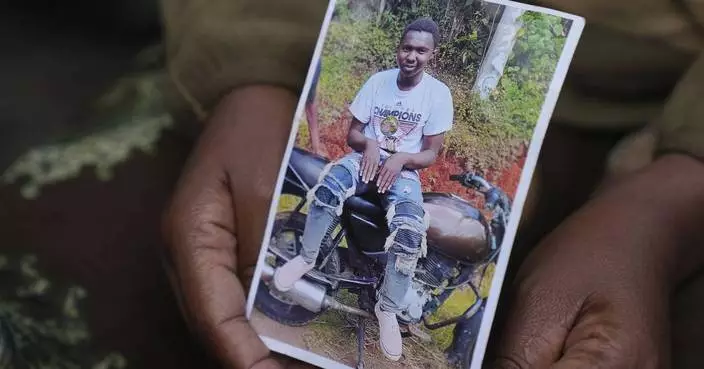The National Transportation Safety Board's daylong hearing on what caused the disastrous East Palestine train derailment near the Ohio-Pennsylvania border last year gave the community, railroads and policymakers plenty to think about.
The NTSB confirmed the crash was caused by an overheating bearing on one of the rail cars, and they detailed why officials were wrong to blow open five tank cars of vinyl chloride and burn the contents.
Click to Gallery
Jennifer Homendy, chair of the National Transportation Safety Board, speaks during a board meeting concerning the February 3, 2023, train derailment of a Norfolk Southern freight train carrying hazardous materials, Tuesday, June 25, 2024, in East Palestine, Ohio. The National Transportation Safety Board’s daylong hearing on what caused the East Palestine derailment and how to prevent similar disasters gave the community, railroads and policymakers plenty to think about. (AP Photo/Sue Ogrocki)
The National Transportation Safety Board's daylong hearing on what caused the disastrous East Palestine train derailment near the Ohio-Pennsylvania border last year gave the community, railroads and policymakers plenty to think about.
A sign thanking Norfolk Southern Railroad, the Ohio EPA and the Federal EPA and all workers who helped East Palestine, Ohio recover hangs on a business in East Palestine, Ohio, Wednesday, June 12, 2024. The National Transportation Safety Board’s daylong hearing on what caused the East Palestine derailment and how to prevent similar disasters gave the community, railroads and policymakers plenty to think about. (AP Photo/Gene J. Puskar)
Becky Rance, center, and Waddle Colley hand out water in downtown East Palestine, Ohio, as the cleanup of portions of a Norfolk Southern freight train that derailed over a week ago continues, Wednesday, Feb. 15, 2023. The National Transportation Safety Board’s daylong hearing on what caused the East Palestine derailment and how to prevent similar disasters gave the community, railroads and policymakers plenty to think about. (AP Photo/Gene J. Puskar)
FILE - A sign reads "Keep Out Testing & Cleaning in Progress" near the Sulphur Run Creek as it flows under homes near the 2023 Norfolk Southern train derailment in East Palestine, Ohio on Wednesday, June 12, 2024. The National Transportation Safety Board’s daylong hearing on what caused the East Palestine derailment and how to prevent similar disasters gave the community, railroads and policymakers plenty to think about. (AP Photo/Carolyn Kaster, File)
Jennifer Homendy, chair of the National Transportation Safety Board, speaks during a board meeting concerning the February 3, 2023, train derailment of a Norfolk Southern freight train carrying hazardous materials, Tuesday, June 25, 2024, in East Palestine, Ohio. The National Transportation Safety Board’s daylong hearing on what caused the East Palestine derailment and how to prevent similar disasters gave the community, railroads and policymakers plenty to think about. (AP Photo/Sue Ogrocki)
FILE - A black plume rises over East Palestine, Ohio, as a result of the controlled detonation of a portion of the derailed Norfolk Southern trains Monday, Feb. 6, 2023. The National Transportation Safety Board’s daylong hearing on what caused the East Palestine derailment and how to prevent similar disasters gave the community, railroads and policymakers plenty to think about. (AP Photo/Gene J. Puskar, File)
FILE - A cleanup worker stands on a derailed tank car of a Norfolk Southern freight train in East Palestine, Ohio, continues, Feb. 15, 2023. The National Transportation Safety Board’s daylong hearing on what caused the East Palestine derailment and how to prevent similar disasters gave the community, railroads and policymakers plenty to think about. (AP Photo/Gene J. Puskar, File)
Here are some of the agency's key findings from Tuesday's hearing:
The detectors railroads use along their tracks to help spot overheating bearings, flat wheels and dangling equipment were a key focus of the NTSB investigation.
The Norfolk Southern train that derailed in East Palestine passed three so called “hot box detectors” just before the crash, but the train's overheating bearing wasn't caught in time even though surveillance footage showed a fire underneath the rail car as it passed through Salem, Ohio.
The detectors did notice the temperature increasing, but didn't signal an alarm soon enough. NTSB investigators said the detector in Salem didn't get an accurate temperature reading even though it showed the bearing was 103 degrees hotter than the outside temperature. That's partly because it can take a while for the heat from a burning bearing to reach the outside of the axle where it can be measured.
The NTSB said more research and rules are needed on detectors because there are no federal standards for them. Major railroads developed the devices on their own without guidance on where they should be placed or when they should trigger an alarm. Industry research has shown that having hot box detectors every 15 miles is ideal, but investigators think more study is needed.
After East Palestine, the six biggest railroads promised to install hot box detectors an average of 15 miles apart and adopted a uniform standard that trains should be stopped anytime a bearing registers more than 170 degrees above the ambient temperature.
But neither one of those measures seem like they would have changed anything in this derailment. Even though the Salem and East Palestine detectors are 20 miles apart, the previous one was just 10 miles away so they already averaged 15 miles of distance between them. Norfolk Southern was already using 170 degrees as its threshold.
The East Palestine derailment highlighted longstanding concerns about certain tank cars known as the DOT-111. Three of the hazardous materials cars that derailed, ruptured and caught fire that night were that model. NTSB Chairwoman Jennifer Homendy said if those cars hadn't ruptured, there may never have been the massive dayslong fire that prompted officials to needlessly blow open five vinyl chloride tank cars and burn their contents three days after the derailment. Authorities did so because they were worried the cars would explode.
The DOT-111 tank cars are made with a steel shell less than half an inch thick that time and again has proven much more likely to rupture than newer cars made with thicker steel.
The same tank cars figured in the worst rail disaster in modern history when 47 people were killed after a crude oil train derailed in the small Canadian town of Lac Megantic in 2013. DOT-111 tank cars were also involved in a number of disastrous crude oil and ethanol derailments in the early 2000s when railroads routinely hauled entire trains of those flammable commodities.
Regulators issued a rule in 2015 that was designed to get all the DOT-111s carrying flammable liquids replaced or upgraded by 2025, but Congress delayed the deadline until 2029. The tank car owners — which are generally the chemical companies, other shippers and leasing companies rather than the railroads — have long resisted a more aggressive upgrade schedule because of the roughly $135,000 price tag of a stronger DOT-117 tank car.
About 25,000 DOT-111 tank cars are still in use, according to the Association of American Railroads. That's a relatively small part of the North American tank car fleet of about 450,000. Many of them carry much more harmless cargo such as corn syrup.
Despite concerns the NTSB has been raising at least since 1991, current rules will still allow DOT-111 tank cars to haul some hazardous materials, such as combustible liquids like diesel, even after the 2029 deadline. They just won't be able to be used for things classified as flammable liquids like the butyl acrylate that spilled in East Palestine.
Rail labor groups and safety advocates hope that now that the NTSB has had its say, Congress will finally act on reforms that stalled months after East Palestine. Republican leaders said they wanted to see that agency's final report before they considered imposing new rules.
In the Senate, proponents for the rail safety bill have continued to express optimism that the legislation could get a vote on the floor. But so far opposition from Republicans and the railroads has kept the bill from moving forward. Similar legislation has failed to gain any momentum in the Republican-controlled House.
It’s expected that Republicans will propose a much narrower rail safety that likely won’t include all the inspection standards and two-person crew requirements that are in the Senate bill now. With attention turning toward the November election, congressional leaders have little time left to complete drawn-out negotiations that significant rail safety legislation would likely require.
Homendy refused to bow to pressure from Norfolk Southern to declare that the railroad didn't press to vent and burn the vinyl chloride cars because it wanted to get the trains moving again quickly. The railroad has long insisted that it was worried about safety — not its delivery schedule or bottom line — when it recommended that last resort.
Railroad safety experts said it's true that the vent and burn strategy was the quickest way to reopen the tracks. Waiting for the fire to go out and unloading the damaged tank cars with trucks might have taken weeks.
“When you've got 35 or 45 trains sitting and waiting to get through one area, no way to get around it," said Randy Fannon, who leads the Brotherhood of Locomotive Engineers and Trainmen’s safety task force and helped with the NTSB investigation.
“The railroad wants to get their main line back open as fast as possible,” he said.
The NTSB's findings and Homendy's critique prompted new calls for accountability. Norfolk Southern already settled with the federal government and agreed to a $600 million class action settlement with residents. State investigations in Ohio and Pennsylvania and individual lawsuits appear to be the only remaining potential consequences.
Ohio Attorney General Dave Yost said: “The NTSB findings answered some questions but raised additional questions. Our lawsuit is ongoing.”
AP reporter Stephen Groves contributed to this report from Washington.
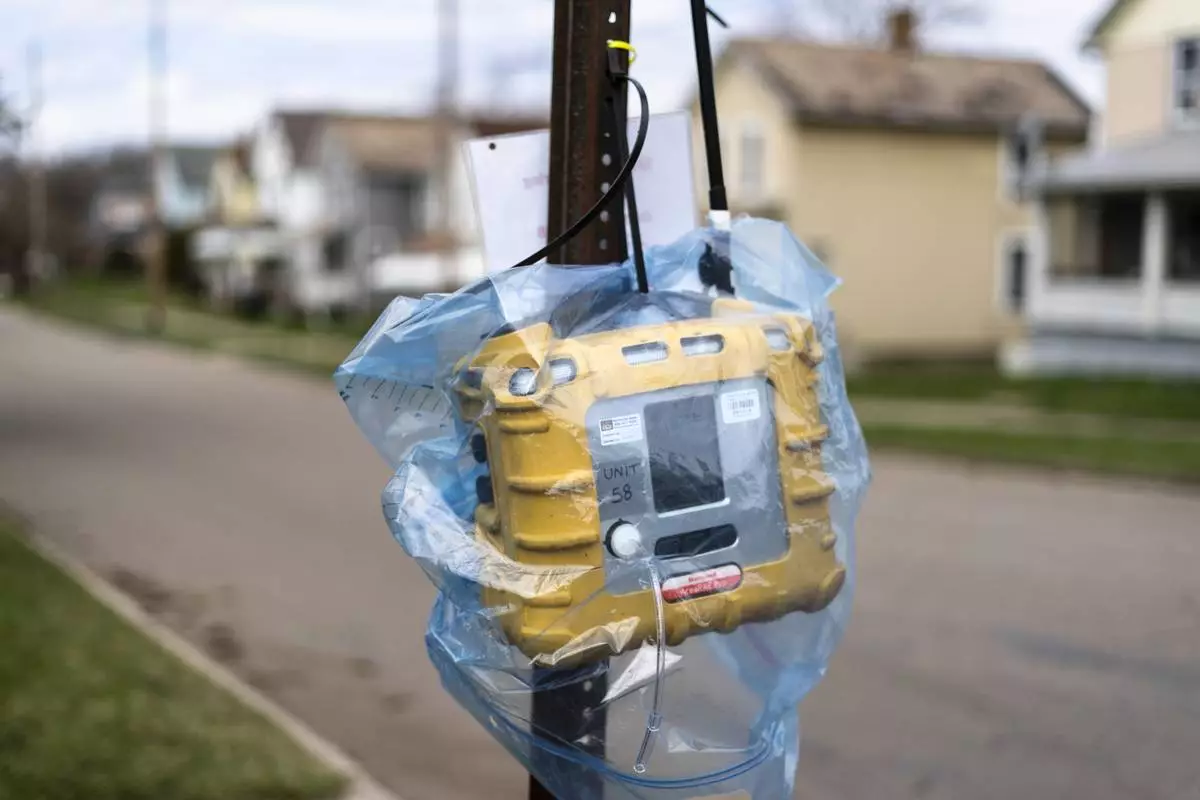
An Environmental Protection Agency (EPA) air monitoring device is mounted to a post following the train derailment in East Palestine, Ohio, Tuesday, April 4, 2023. The National Transportation Safety Board’s daylong hearing on what caused the East Palestine derailment and how to prevent similar disasters gave the community, railroads and policymakers plenty to think about. (AP Photo/Matt Rourke)
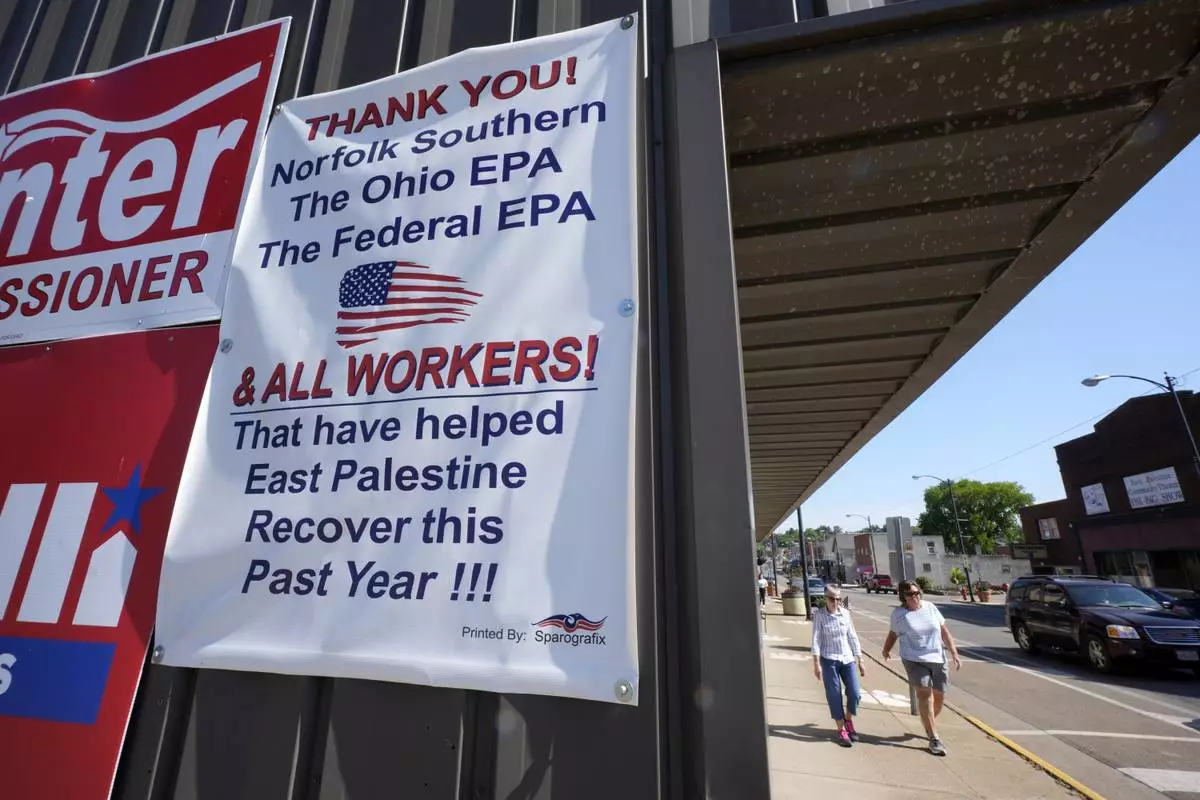
A sign thanking Norfolk Southern Railroad, the Ohio EPA and the Federal EPA and all workers who helped East Palestine, Ohio recover hangs on a business in East Palestine, Ohio, Wednesday, June 12, 2024. The National Transportation Safety Board’s daylong hearing on what caused the East Palestine derailment and how to prevent similar disasters gave the community, railroads and policymakers plenty to think about. (AP Photo/Gene J. Puskar)
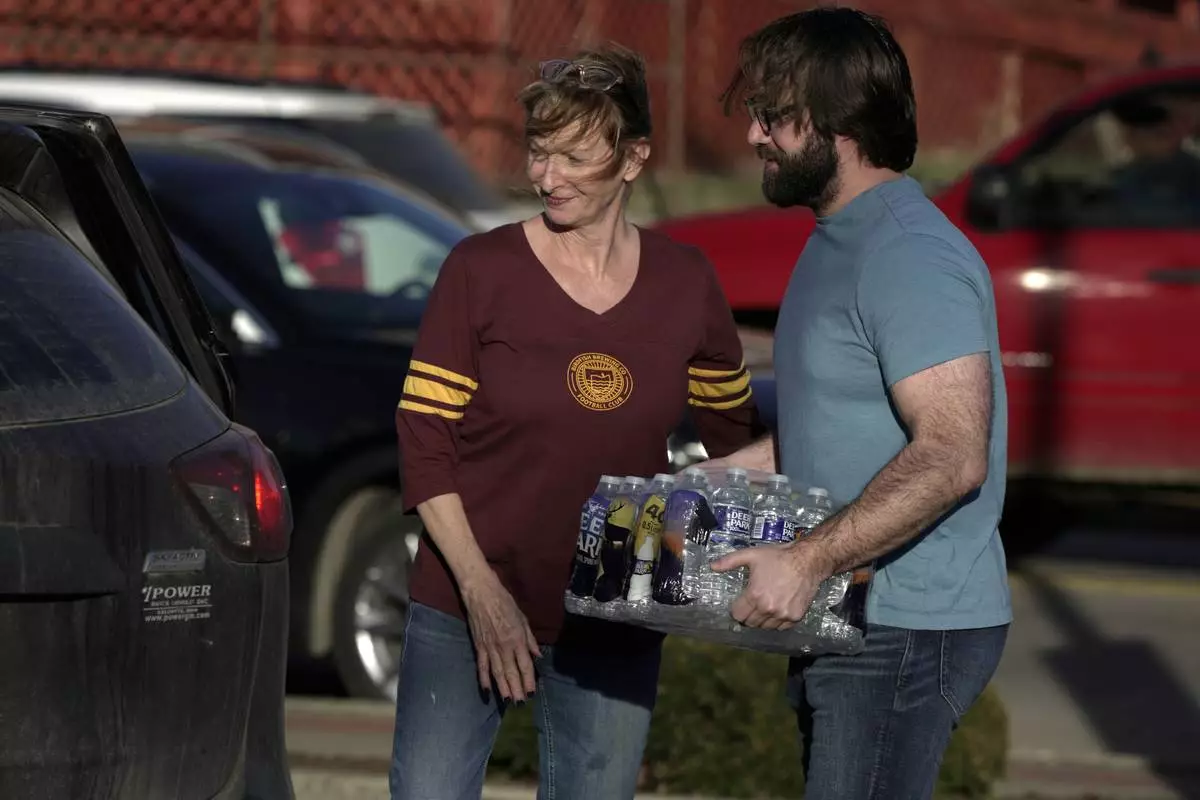
Becky Rance, center, and Waddle Colley hand out water in downtown East Palestine, Ohio, as the cleanup of portions of a Norfolk Southern freight train that derailed over a week ago continues, Wednesday, Feb. 15, 2023. The National Transportation Safety Board’s daylong hearing on what caused the East Palestine derailment and how to prevent similar disasters gave the community, railroads and policymakers plenty to think about. (AP Photo/Gene J. Puskar)
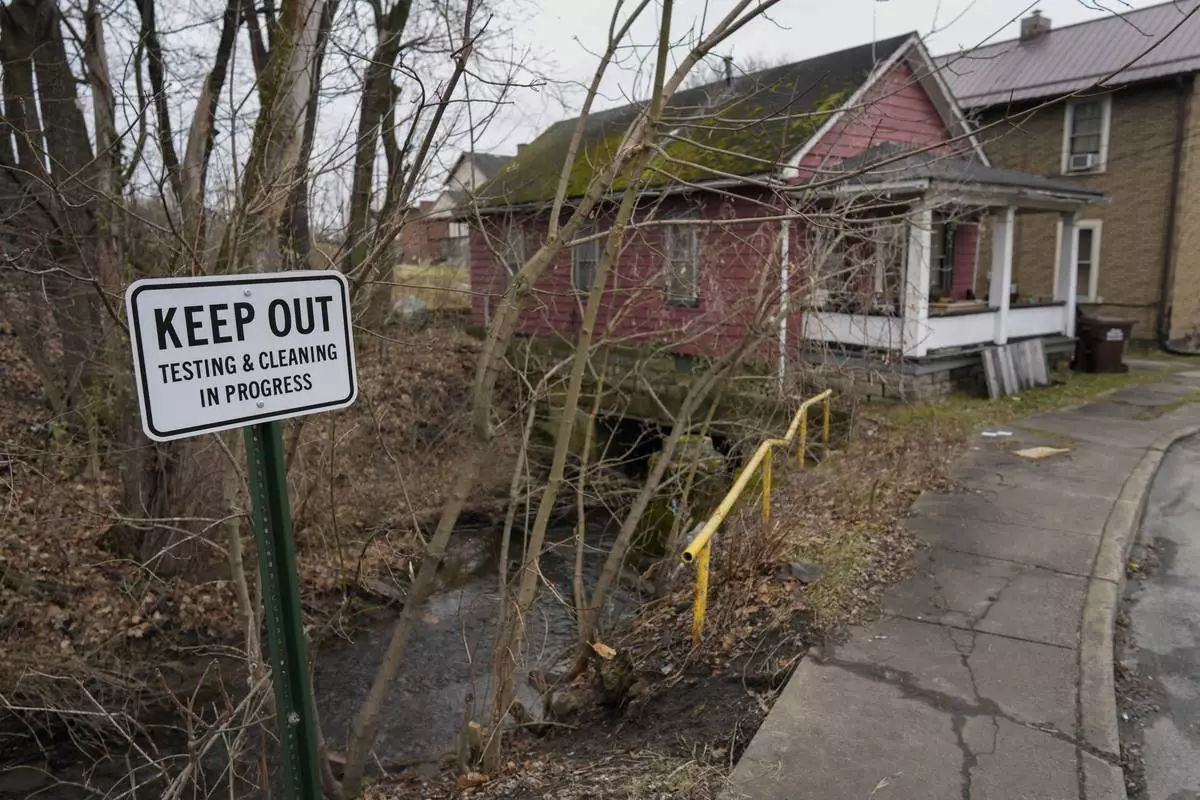
FILE - A sign reads "Keep Out Testing & Cleaning in Progress" near the Sulphur Run Creek as it flows under homes near the 2023 Norfolk Southern train derailment in East Palestine, Ohio on Wednesday, June 12, 2024. The National Transportation Safety Board’s daylong hearing on what caused the East Palestine derailment and how to prevent similar disasters gave the community, railroads and policymakers plenty to think about. (AP Photo/Carolyn Kaster, File)
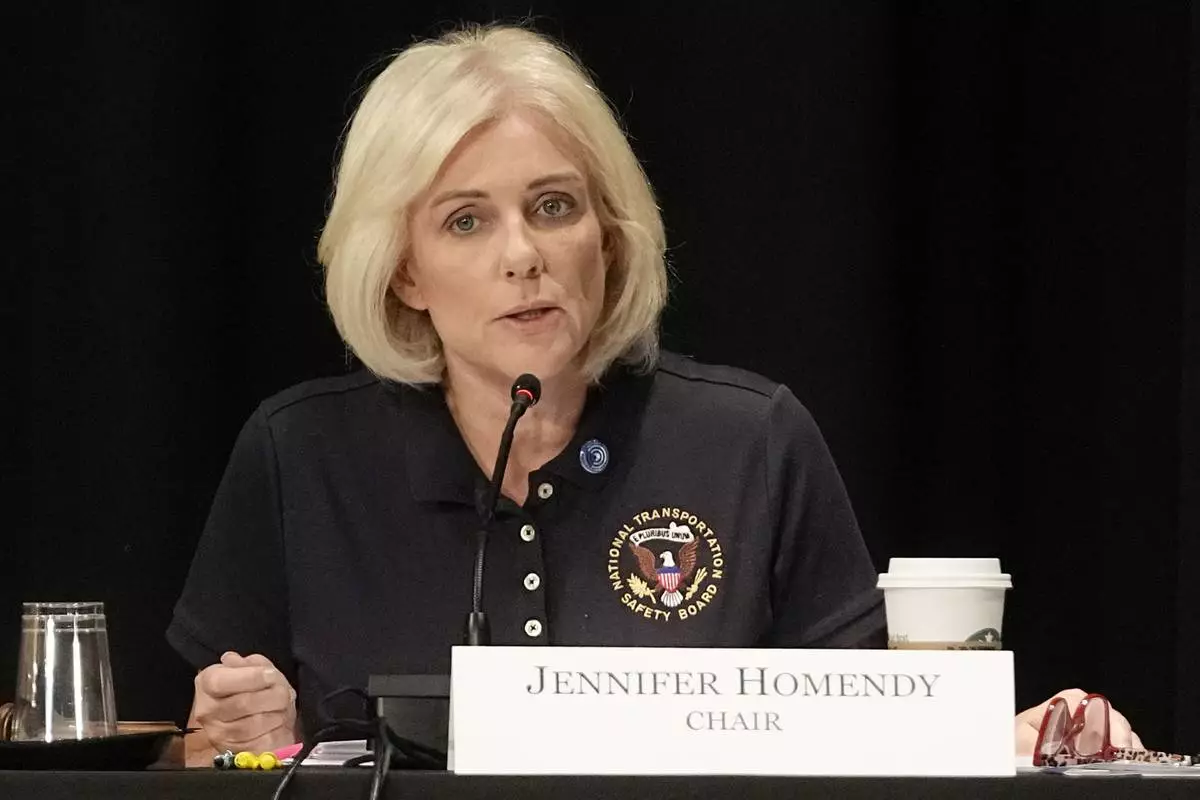
Jennifer Homendy, chair of the National Transportation Safety Board, speaks during a board meeting concerning the February 3, 2023, train derailment of a Norfolk Southern freight train carrying hazardous materials, Tuesday, June 25, 2024, in East Palestine, Ohio. The National Transportation Safety Board’s daylong hearing on what caused the East Palestine derailment and how to prevent similar disasters gave the community, railroads and policymakers plenty to think about. (AP Photo/Sue Ogrocki)

FILE - A black plume rises over East Palestine, Ohio, as a result of the controlled detonation of a portion of the derailed Norfolk Southern trains Monday, Feb. 6, 2023. The National Transportation Safety Board’s daylong hearing on what caused the East Palestine derailment and how to prevent similar disasters gave the community, railroads and policymakers plenty to think about. (AP Photo/Gene J. Puskar, File)
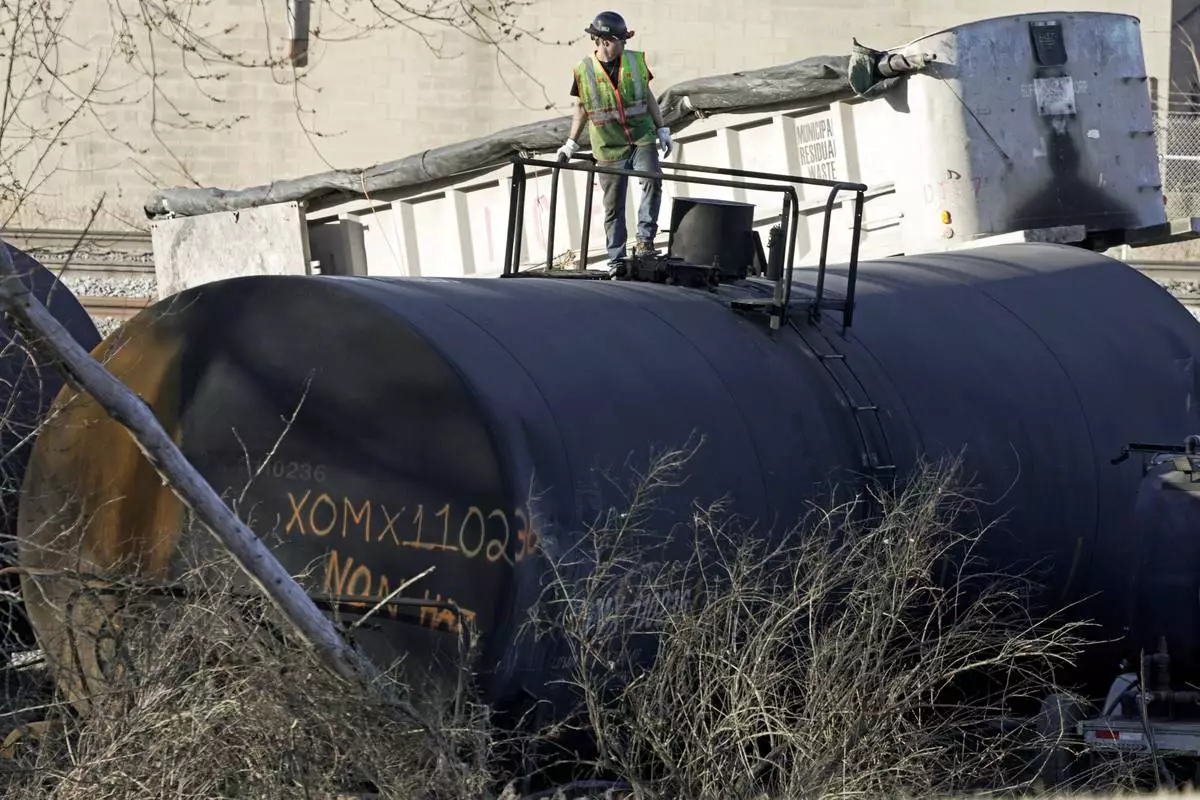
FILE - A cleanup worker stands on a derailed tank car of a Norfolk Southern freight train in East Palestine, Ohio, continues, Feb. 15, 2023. The National Transportation Safety Board’s daylong hearing on what caused the East Palestine derailment and how to prevent similar disasters gave the community, railroads and policymakers plenty to think about. (AP Photo/Gene J. Puskar, File)
DUBAI, United Arab Emirates (AP) — Seesawing results released early Saturday in Iran’s presidential election put the race between little-known reformist Masoud Pezeshkian and hard-liner Saeed Jalili, with the lead trading between the two men as a runoff vote appeared likely.
Iranian state television reported the results which did not initially put either man in a position to win Friday's election outright, potentially setting the stage for a second round of voting to replace the late hard-line President Ebrahim Raisi who died in a helicopter crash last month.
So far, no turnout figures have been offered— a crucial component of whether Iran's electorate backs its Shiite theocracy after years of economic turmoil and mass protests.
Voters faced a choice between the three hard-line candidates and Pezeshkian, a heart surgeon.
After counting over 19 million votes, Pezeshkian had 8.3 million while Jalili held 7.18 million. Another candidate, hard-line parliament speaker Mohammad Bagher Qalibaf, had some 2.67 million votes while Shiite cleric Mostafa Pourmohammadi had over 158,000 votes.
Iranian law requires that a winner gets more than 50% of all votes cast. If not, the race’s top two candidates will advance to a runoff a week later. There’s been only one runoff presidential election in Iran’s history: in 2005, when hard-liner Mahmoud Ahmadinejad bested former President Akbar Hashemi Rafsanjani.
As has been the case since the 1979 Islamic Revolution, women and those calling for radical change have been barred from running, while the vote itself will have no oversight from internationally recognized monitors.
There had been calls for a boycott, including from imprisoned Nobel Peace Prize laureate Narges Mohammadi. Mir Hossein Mousavi, one of the leaders of the 2009 Green Movement protests who remains under house arrest, has also refused to vote along with his wife, his daughter said.
There’s also been criticism that Pezeshkian represents just another government-approved candidate. In a documentary on the reformist candidate aired by state TV, one woman said her generation was “moving toward the same level” of animosity with the government that Pezeshkian’s generation had in the 1979 revolution.
Raisi, 63, died in the May 19 helicopter crash that also killed the country’s foreign minister and others. He was seen as a protégé of Iran’s Supreme Leader Ayatollah Ali Khamenei and a potential successor. Still, many knew him for his involvement in the mass executions that Iran conducted in 1988, and for his role in the bloody crackdowns on dissent that followed protests over the death of Mahsa Amini, a young woman detained by police over allegedly improperly wearing the mandatory headscarf, or hijab.
The voting came as wider tensions have gripped the Middle East over the Israel-Hamas war in the Gaza Strip.
In April, Iran launched its first-ever direct attack on Israel over the war in Gaza, while militia groups that Tehran arms in the region — such as the Lebanese Hezbollah and Yemen’s Houthi rebels — are engaged in the fighting and have escalated their attacks.
Meanwhile, the Islamic Republic continues to enrich uranium at near weapons-grade levels and maintains a stockpile large enough to build — should it choose to do so — several nuclear weapons.
Despite the recent unrest, there was only one reported attack around the election. Gunmen opened fire on a van transporting ballot boxes in the restive southeastern province of Sistan and Baluchestan, killing two police officers and wounding others, the state-run IRNA news agency reported. The province regularly sees violence between security forces and the militant group Jaish al-Adl, as well as drug traffickers.
Karimi reported from Tehran, Iran.
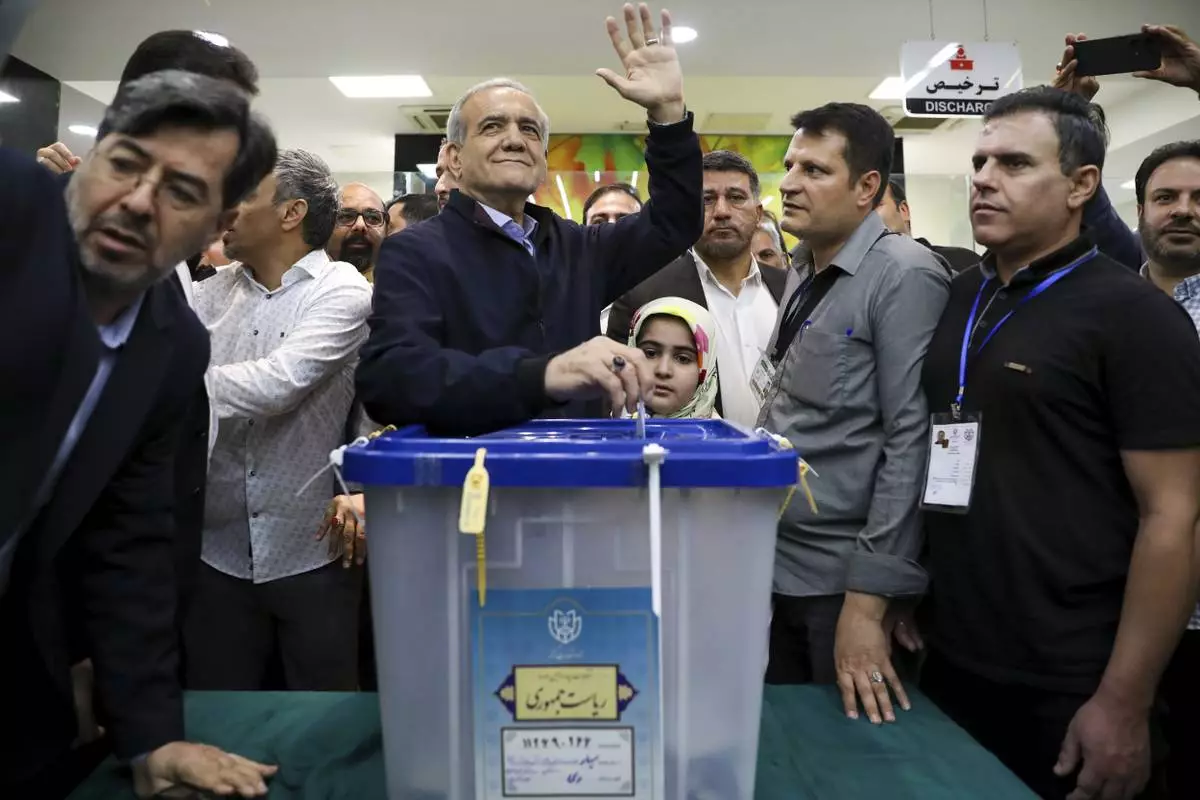
In this photo provided by Iranian Students' News Agency, ISNA, reformist candidate for the Iranian presidential election Masoud Pezeshkian casts his ballot as he waves to media in a polling station, in Tehran, Iran, Friday, June 28, 2024. Iranians are voting in a snap election to replace the late hard-line President Ebrahim Raisi. (Majid Khahi, ISNA via AP)
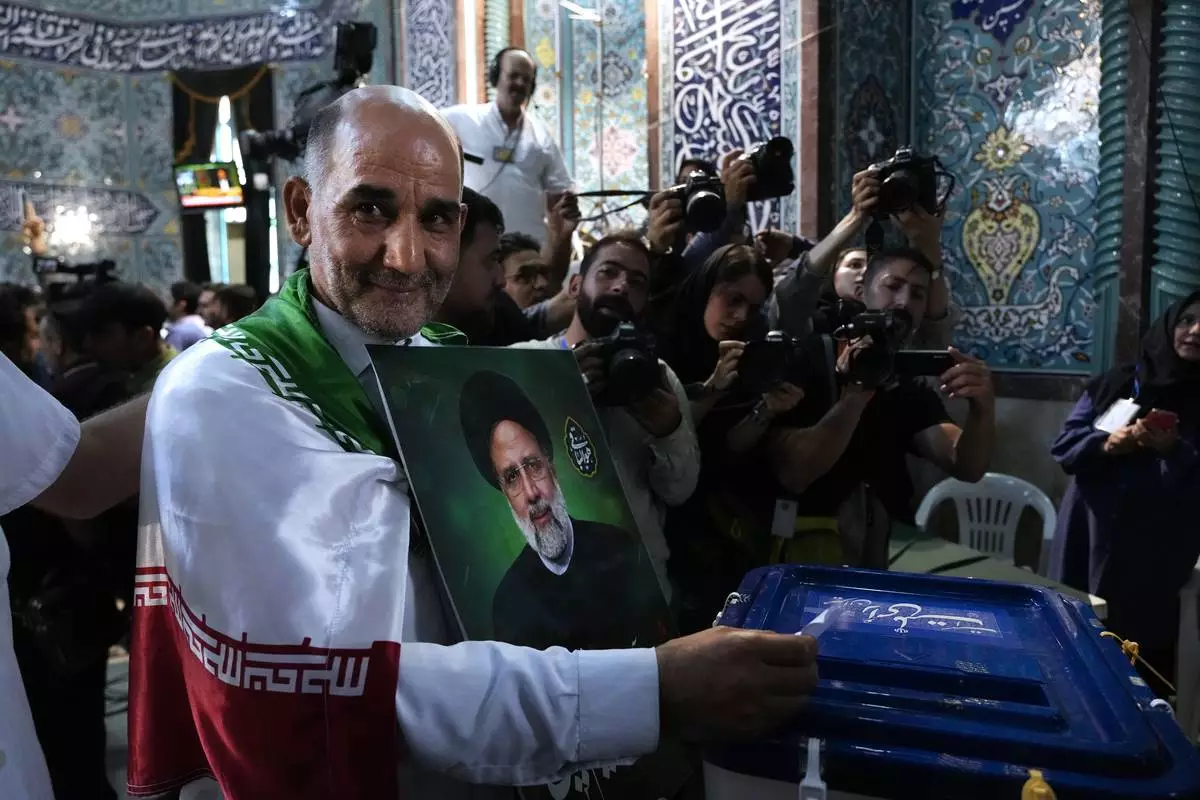
A man casts his ballot during the presidential election as he holds a picture of the late President Ebrahim Raisi in a polling station, in Tehran, Iran, Friday, June 28, 2024. Iranians were voting Friday in a snap election to replace the late President Ebrahim Raisi, killed in a helicopter crash last month, as public apathy has become pervasive in the Islamic Republic after years of economic woes, mass protests and tensions in the Middle East. (AP Photo/Vahid Salemi)

A woman fills out her ballot during the Iranian presidential election in a polling station at the shrine of Saint Saleh in northern Tehran, Iran, Friday, June 28, 2024. Iranians were voting Friday in a snap election to replace the late President Ebrahim Raisi, killed in a helicopter crash last month, as public apathy has become pervasive in the Islamic Republic after years of economic woes, mass protests and tensions in the Middle East. (AP Photo/Vahid Salemi)

Iranian Supreme Leader Ayatollah Ali Khamenei waves to media after casting his vote during the presidential election in Tehran, Iran, Friday, June 28, 2024. Iranians were voting Friday in a snap election to replace the late President Ebrahim Raisi, killed in a helicopter crash last month, as public apathy has become pervasive in the Islamic Republic after years of economic woes, mass protests and tensions in the Middle East. (AP Photo/Vahid Salemi)
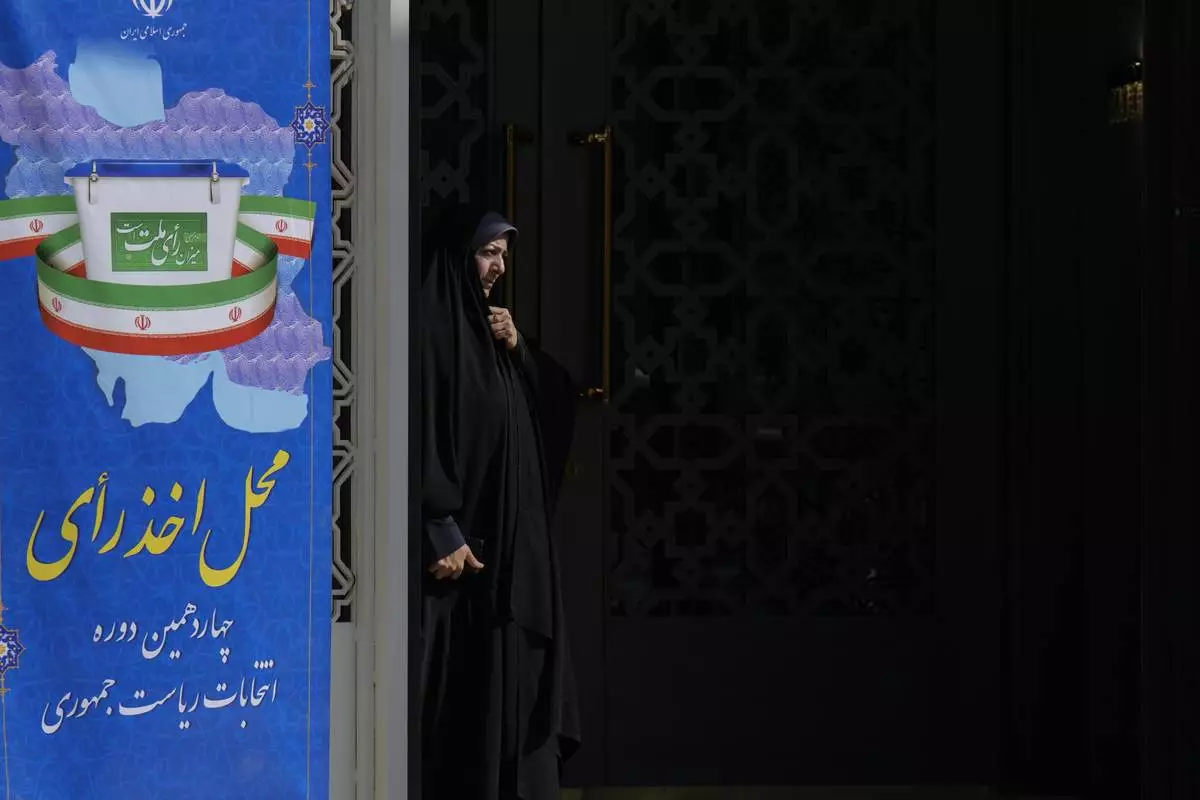
A woman prepares to casts her ballot during the presidential election at a polling station inside the Iranian embassy in Baghdad, Iraq, Friday, June 28, 2024. Iranians are voting in a presidential election to replace the late President Ebrahim Raisi, killed in a helicopter crash in May along with the country's foreign minister and several other officials. (AP Photo/Hadi Mizban)

Iranian Supreme Leader Ayatollah Ali Khamenei arrives to vote for the presidential election, in Tehran, Iran, Friday, June 28, 2024. Iranians voted Friday in a snap election to replace the late hard-line President Ebrahim Raisi, with the race's sole reformist candidate vowing to seek "friendly relations" with the West in an effort to boost his campaign. (AP Photo/Vahid Salemi)

A woman prepares to casts her ballot during the presidential election at the Iranian consulate in Basra southeast of Baghdad, Iraq, Friday, June 28, 2024. Iranians are voting in a presidential election to replace the late President Ebrahim Raisi, killed in a helicopter crash in May along with the country's foreign minister and several other officials. (AP Photo/Nabil al-Jourani)
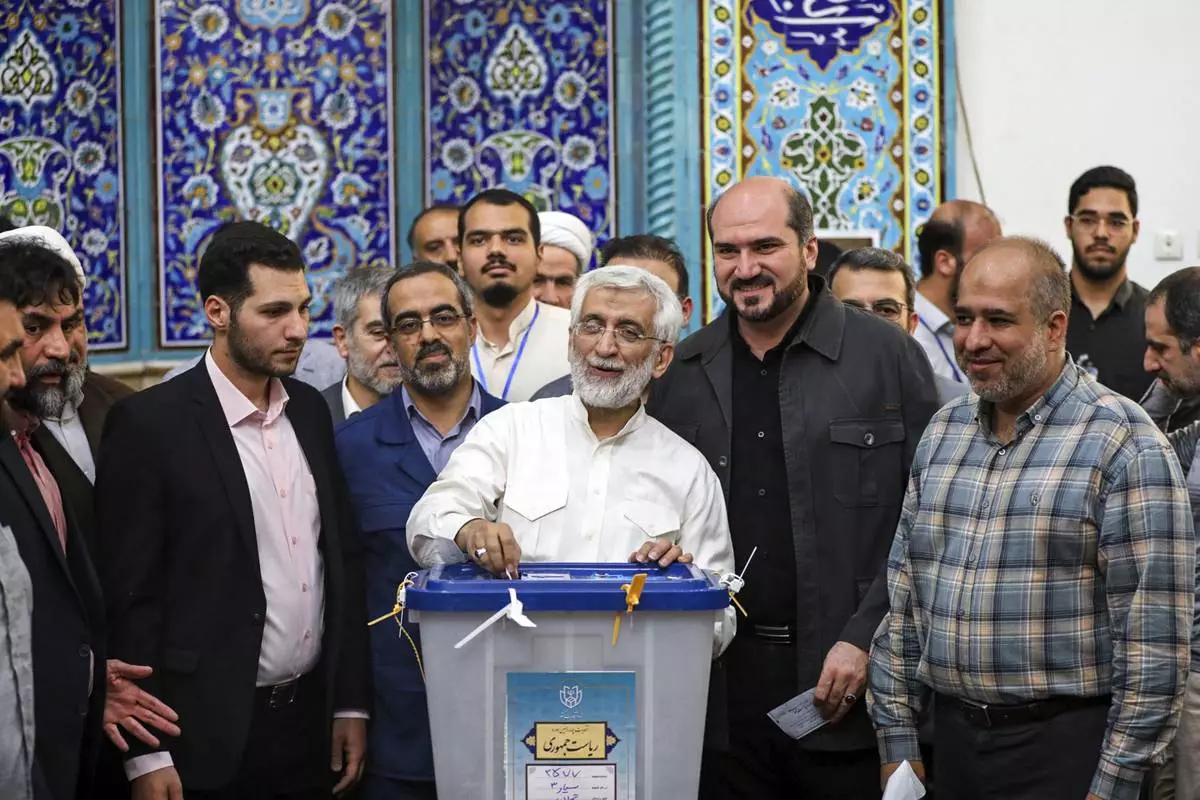
In this photo provided by Iranian Students' News Agency, ISNA, hard-line former Iranian senior nuclear negotiator and candidate for the presidential election Saeed Jalili casts his ballot in a polling station, in Tehran, Iran, Friday, June 28, 2024. Iranians are voting in a snap election to replace the late hard-line President Ebrahim Raisi. (Alireza Sotakabr, ISNA via AP)









